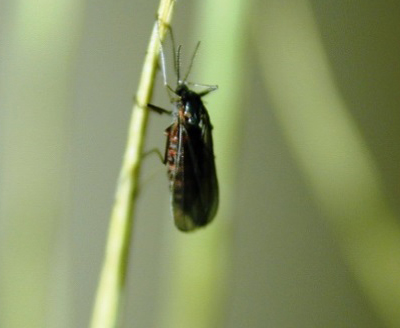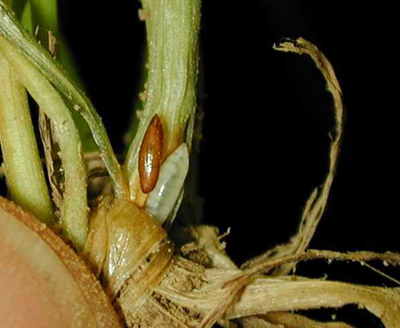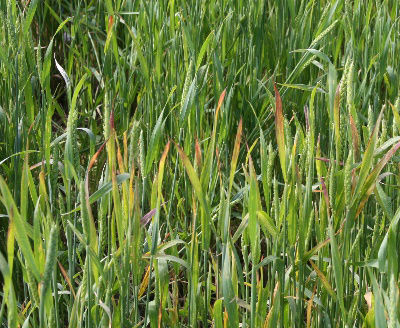
- Decisions made before planting wheat are critical for effective season-long pest control.
- Variety selection should balance the factors required to meet overall cropping system objectives.
- The Hessian Fly-free planting date and other cultural factors remain very important.
- Seed treatments provide additional protection in high pressure environments.
Some key decisions made before planting wheat will have a large impact on the success of the season-long pest management program. Perhaps the most important pre-season decision with any crop is variety selection. Wheat varieties vary significantly in yield potential, agronomics, and defensive traits. Varieties must be selected with consideration for the overall objectives of the cropping system – e.g. top end yield may be compromised for an earlier maturing variety that facilitates double-crop soybeans and offers a better disease package. By contrast, full-season top yielding varieties may compromise disease tolerance traits, requiring additional crop protection inputs.
If disease is an important factor historically for a given field, look for varieties with good resistance ratings on Septoria leaf blotch, Stagonospora, powdery mildew (especially in high nitrogen management systems), or stem and leaf rusts. Fusarium head blight (FBH or ‘head scab’) has been a major problem in many areas due to wet spring conditions in recent years. FBH disease development is largely weather dependent and no varieties offer complete resistance, but varieties do express varying levels of resistance as measured by disease incidence, severity, and kernel quality. Land grant universities typically publish yield and resistance ratings annually for most public and commercial varieties of wheat.

A second critical pre-season factor to consider is planting date. The Hessian fly is a small fragile gnat that appears in late September, lives for just a few days, and lays eggs in wheat, barley, rye, and other native grasses. Maggots hatch soon thereafter and feed on plant juices, which can lead to permanent stunting, chlorosis, and lodging. Planting after the fly-free date is effective because the wheat emerges after most adult flies have perished and the egg laying period has ended. Hessian fly is now much less of a problem in the Midwestern US than it was historically, due to the widespread cultural practice of planting after the fly-free date. Mild fall weather can push back the fly-free date by several days, because adults will remain active longer into the fall. The primary target is to get wheat in the ground within 10 days to two weeks after the “fly-free date.” As you go beyond this target, increase the seeding rate by as much as one third to compensate for fewer tillers. It is extremely important to strive for near perfect planting depth. The planting depth caution comes about because late planted wheat will be at greater risk from winter kill and heaving. Shallow planted wheat will increase this risk. Deep planted wheat will delay emergence and could affect stand establishment.
Planting after the fly-free date is good cultural practice for several additional reasons:
- Early planting can lead to excessive fall growth, which can increase susceptibility to winter-kill and several diseases. Likewise late planting can result in poor tiller development and winter survival.
- Higher soil temperatures in early fall increase the activity of a host of soil-borne diseases, including seedling blights and take-all, as well as soil-borne viruses like soil-borne wheat mosaic virus (SBWMV) and wheat spindle streak mosaic virus (WSSMV, vectored by the fungus-like organism, Polymyxa graminis).
- Modern varieties have been bred for resistance to Hessian fly, but new Hessian fly biotypes are evolving for which no genetic resistance is available.
- Aphid populations are often higher in earlier planted wheat. Aphids directly reduce vigor and can vector the disease Barley Yellow Dwarf Virus (BYDV) in the fall.
- Early planting increases severity of infection by wheat streak mosaic virus (WSMV), which is vectored by wheat curl mites that are more active at higher temperatures.
Lastly, seed treatments are also an essential component of high management wheat programs. Systemic fungicidal seed treatments provide critical protection against soil-borne diseases (pythium, rhizoctonia, fusarium, common bunt, and stinking smut), seed-borne diseases (loose smut), and even some fall foliar diseases (powdery mildew, rust, and Septoria). Insecticidal seed treatments have been somewhat less consistent in control and yield response, but thiamethoxam and imidacloprid have been shown to provide good protection against Hessian fly, aphids, and below ground insects for a period of about 30 days after planting. In the absence of insecticidal seed treatments, foliar insecticides can be used to manage aphids in the fall but application timing is critical to effectively reduce damaging populations. Always refer to product labels for specific control recommendations.

Image 1: Hessian Fly Adult
Image 2: Hessian Fly Larvae and Flax Seed Puparium
Image 3: Barley Yellow Dwarf Virus Symptoms in Wheat